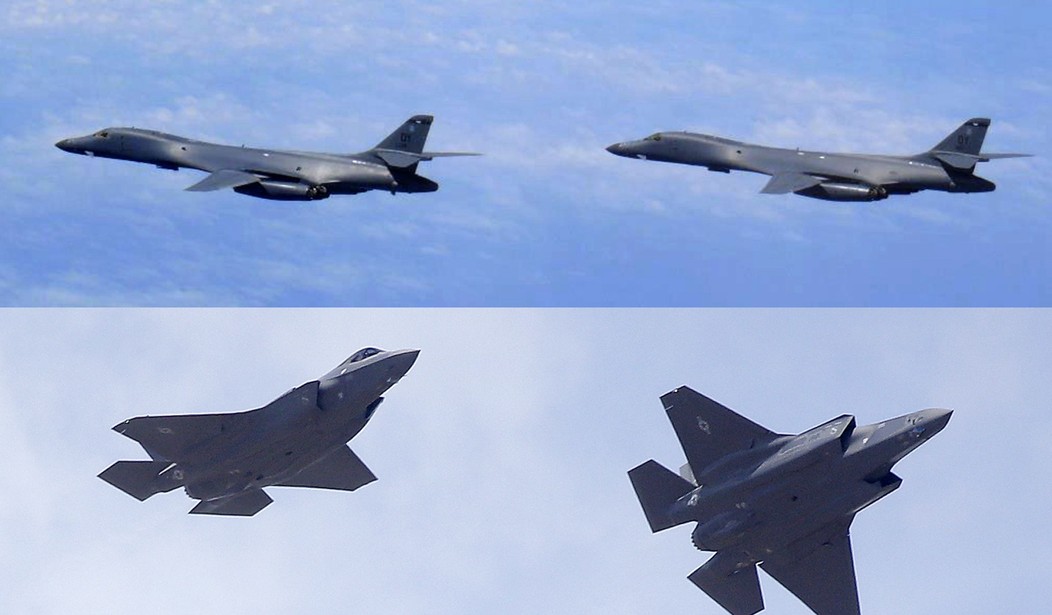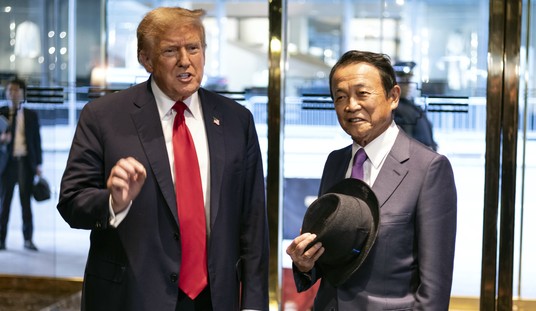Politico reports that the Pentagon is “freaking out” about the possibility, and frankly, I can see why.
There is no doubt that the US military in a straight-up fight is superior to any military in the world. It’s not just that we have superior technology, which seems still to be the case. It is because we have the best-trained military in the world as well as some of the best tacticians.
This has been demonstrated again and again over the past couple decades, although only against third-rate opponents. But while China is anything but, they also have no real experience in fighting wars. Should a conflict between the United States and China arise, one has every reason to expect that the great weakness of China would be ensuring coordination and communication between its disparate military units.
Yes, but…
Any conflict between the US and China will not be anything like a fair fight. China has almost all the advantages going into the battle, and the outbreak of war would come from a surprise attack that will devastate many of our military assets in the region. Our airbases would be destroyed, along with many of our aircraft. In every war the US has fought since Korea, the US has had the luxury of spending months on logistics in a very permissive environment. Our enemies have been at risk, while we have not.
War with China would be very different, and our logistics chain will be long, at risk, and with insufficient material to back it up.
The giant is “lying in bed still. Its eyes are open and it’s recognizing there’s a problem. But it’s got to get out of bed.” Read @politico on the crisis of America's withered military-industry complex and the grim prospect of losing a war with China: https://t.co/EDkPGp61Eu
— Niall Ferguson (@nfergus) June 10, 2023
Decades of military dominance have had the effect of hollowing out our military capabilities, although there are no outward signs of that fact because the hollowing has taken place behind the scenes. The actual forces are remarkably strong, despite the flaws that are easily blown out of proportion. In a straight-up battle, the US would win in almost all cases because our military knows how to coordinate forces and nobody else has that proven capability. This is one of the main reasons Russia got smoked early in the Ukraine conflict, and why their air force is still pretty worthless in this war.
The fight for Taiwan will not be a fight of militaries squaring off on even terms, even though our militaries are well-matched in weapons capabilities.
From the Politico article, here is how a Pentagon war game played out:
The war began in the early morning hours with a massive bombardment — China’s version of “shock and awe.” Chinese planes and rockets swiftly destroyed most of Taiwan’s navy and air force as the People’s Liberation army and navy mounted a massive amphibious assault across the 100-mile Taiwan Strait. Having taken seriously President Joe Biden’s pledge to defend the island, Beijing also struck pre-emptively at U.S. and allied air bases and ships in the Indo-Pacific. The U.S. managed to even the odds for a time by deploying more sophisticated submarines as well as B-21 and B-2 stealth bombers to get inside China’s air defense zones, but Washington ran out of key munitions in a matter of days and saw its network access severed. The United States and its main ally, Japan, lost thousands of servicemembers, dozens of ships, and hundreds of aircraft. Taiwan’s economy was devastated. And as a protracted siege ensued, the U.S. was much slower to rebuild, taking years to replace ships as it reckoned with how shriveled its industrial base had become compared to China’s.
The Chinese “just ran rings around us,” said former Joint Chiefs Vice Chair Gen. John Hyten in one after-action report. “They knew exactly what we were going to do before we did it.”
This is all too believable, unfortunately. The chances of a first strike from the US are, essentially, nonexistent. Most of our forces are in predictable places, and any secondary facilities–presuming China hadn’t sussed them out prior to the war–would be quickly vulnerable and ill-equipped compared to an airbase. However much we would like to believe that we could blunt China’s missile capabilities, the fact is that they have enormous quantities, they are easy to disperse and hide because they, unlike our airbases, are not dependent upon fixed position, and they are so numerous that airstrikes from long-range bombers will be insufficient to destroy enough of them.
We couldn’t find scuds in a desert. China is not a desert. There are plenty of great places to hide.
Our defenses are very good in quality, but in quantity they are too few. A Patriot missile is $4 million, and the system is about a billion dollars. There will never be enough. However good an individual missile is, once they are depleted the battery is simply a target, not a threat.
China would, obviously, have a difficult time crossing the Taiwan Strait. But it doesn’t actually have to right away, and might anyway given a much higher tolerance for losses. Systematically destroying Taiwan’s defense over time while blockading the island would eventually do the trick, as happened in the 1990-1 war against Iraq. By the time we crossed the border, Iraq was already defeated.
And, as the Politico article rightly points out, the hollow part of the US military is not our forces, but the supply chain they rely on.
But a swift response may not be possible, in large part because of how shrunken the U.S. manufacturing base has become since the Cold War. All of a sudden, Washington is reckoning with the fact that so many parts and pieces of munitions, planes, and ships it needs are being manufactured overseas, including in China. Among the deficiencies: components of solid rocket motors, shell casings, machine tools, fuses and precursor elements to propellants and explosives, many of which are made in China and India. Beyond that, skilled labor is sorely lacking, and the learning curve is steep. The U.S. has slashed defense workers to a third of what they were in 1985 — a number that has remained flat — and seen some 17,000 companies leave the industry, said David Norquist, president of the National Defense Industrial Association. And commercial companies are leery of the Pentagon’s tangle of rules and restrictions.
“Unfortunately, the more you dig under the hood the more problems you see,” said a senior Democratic defense expert in the Senate who was granted anonymity because he was not allowed to speak on the record for his boss. “This is largely a function of the post-Cold War period being focused on efficiency. Since the Gulf War we came to expect too much from smart munitions. We haven’t needed stockpiles or found ourselves critically low on spare parts. So we’ve decreased the wiggle room.” At a military conference earlier this year, the Navy’s intelligence chief, Rear Adm. Mike Studeman, called the problem “China blindness,” saying: “It’s very unsettling to see how much the U.S. is not connecting the dots on our number one challenge.”
Efficiency and resilience are usually at odds with each other. Resilience depends upon redundancy, overproduction of critical components so they are available when needed, and maintaining capacity that is currently unneeded. When 2/3rds of your workers are gone, getting them back is a very long process.
And in a war with China, very long time frames are not a luxury we would have. As China has built up its defense capacity from a ridiculously low base decades ago, the US has gone the opposite path. Even the acquisition of an aircraft can take decades in the US. When the U2 and the SR-71 were needed, they went from concept to production in a short period of time. From conception to execution the time frame was months or a few years.
When the KC-135 tanker was needed, it took 2 years from concept to execution. We have been using it since the 50s, and our entire fleet was built and delivered in just a few years. The Boeing tanker that is supposed to replace it–we have purchased many, but they still fail to work with many of our aircraft and are plagued with issues, was first conceived in 2001. In 22 years a fully functioning aircraft has yet to be delivered.
The Sr-71, one of the most legendary and currently the record holder for the fastest aircraft ever, went from conception to execution in less than 5 years. It’s hard to argue that the project was simple–entirely new materials had to be developed, as well as a new propulsion system.
The US simply doesn’t have the industrial capacity to sustain a war against a peer nation.
“While they were industrializing, we were deindustrializing,” says Brose. Today China commands some 45 percent to 50 percent of total shipbuilding globally, while the United States has less than one percent. “Given those numbers, explain to me how the United States is going to win a traditional shipbuilding race with China?”
“The bottom line is this whole problem was decades in the making,” added Brose. “It’s not something that just kind of crept up on us and surprised us over the last couple of years.”
Forty years ago strategist Edward Luttwak argued that America needed more waste and mismanagement in the Pentagon budget. His framing was tongue in cheek, but his point was not: efficiency is not an appropriate goal for a military; having too much is a far better class of problem than not having enough and not having the capacity to get more quickly.
If the US fights and loses to China, it will not be because our troops and weapons are not the best in the world; on balance they are.
It will be because we have failed to ensure those troops have enough redundancy to absorb losses and replace consumed weapons when they need them most.







